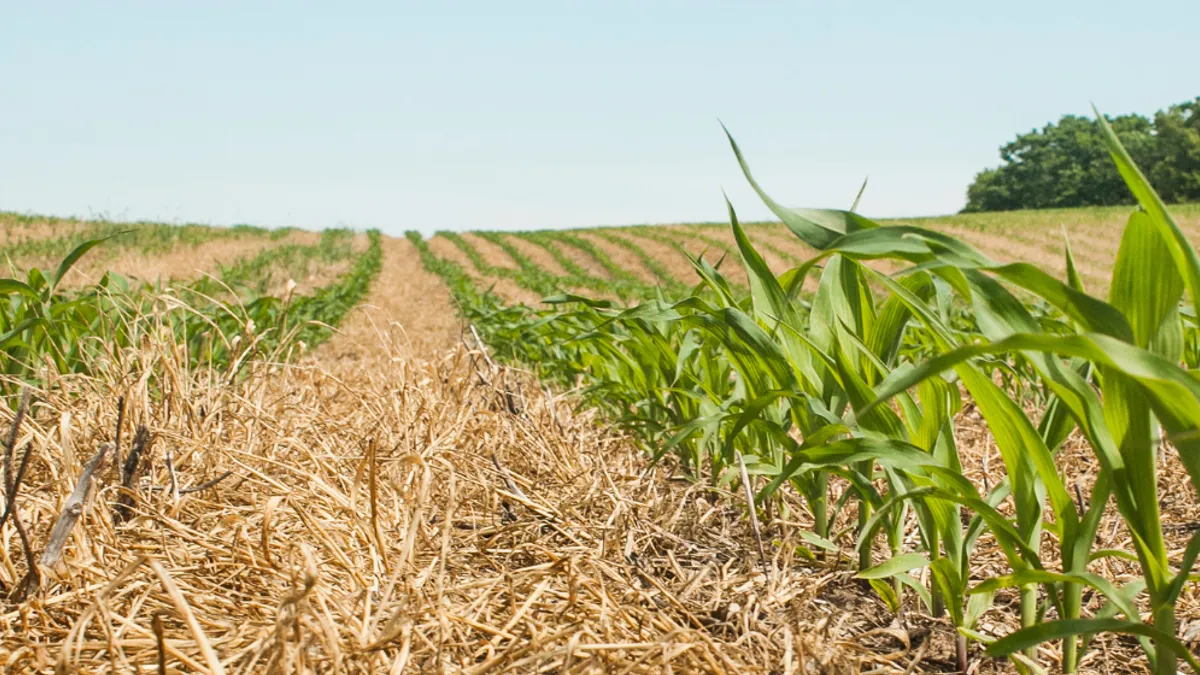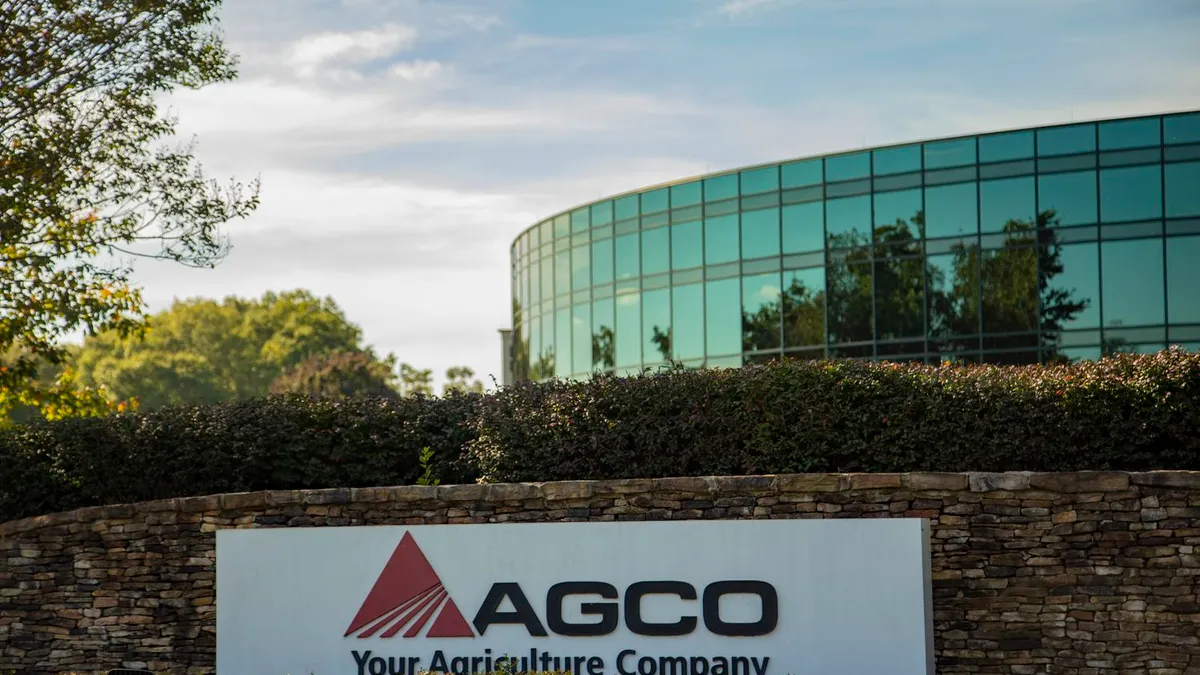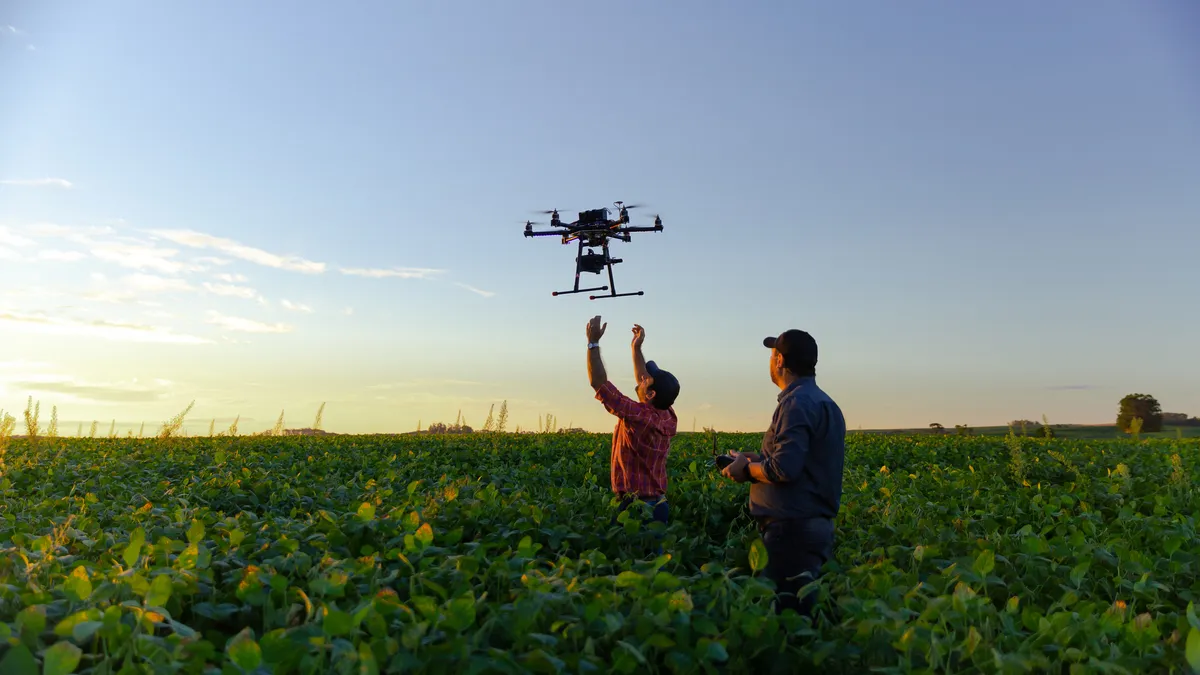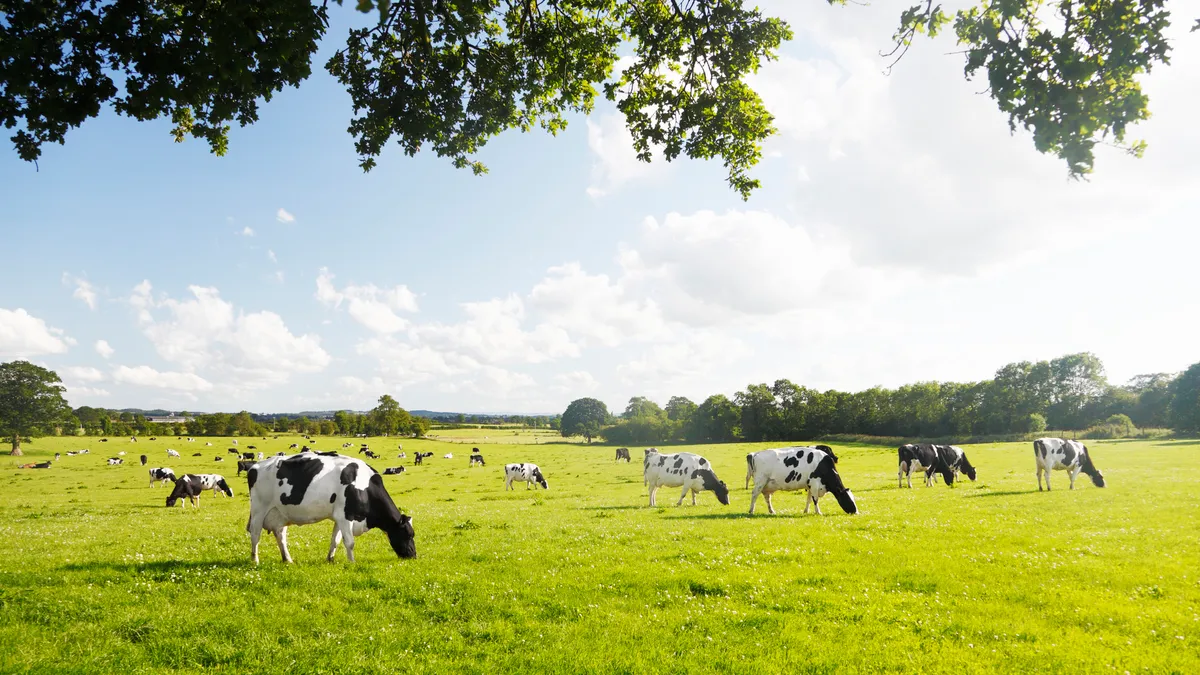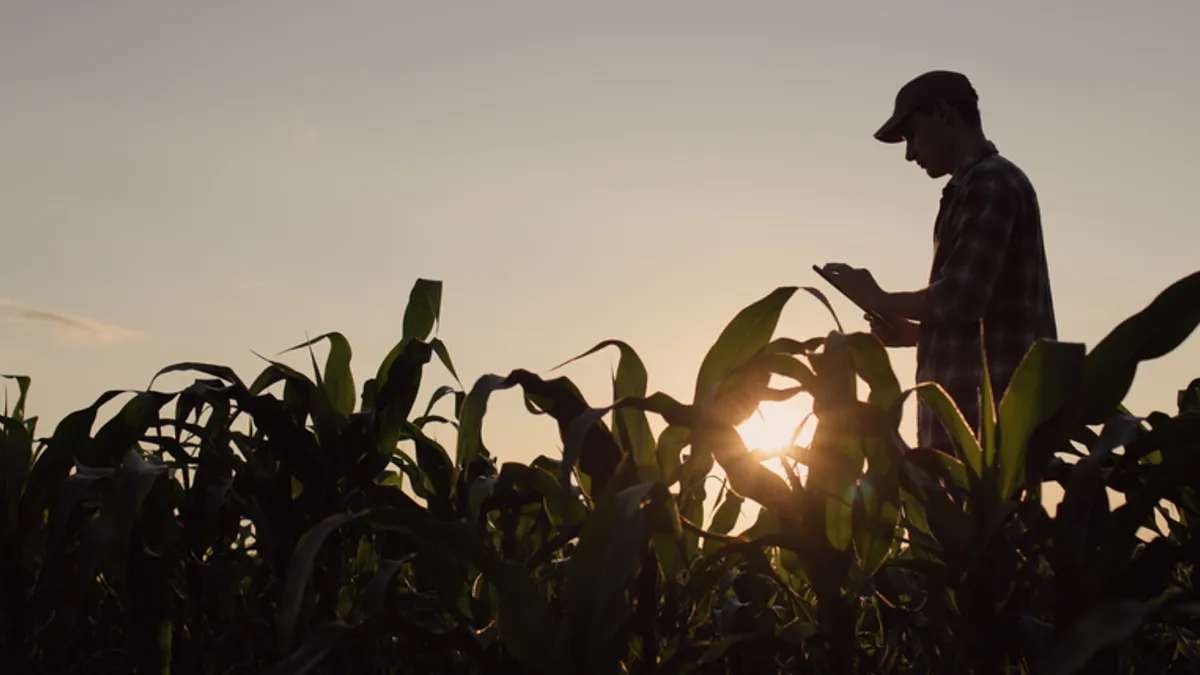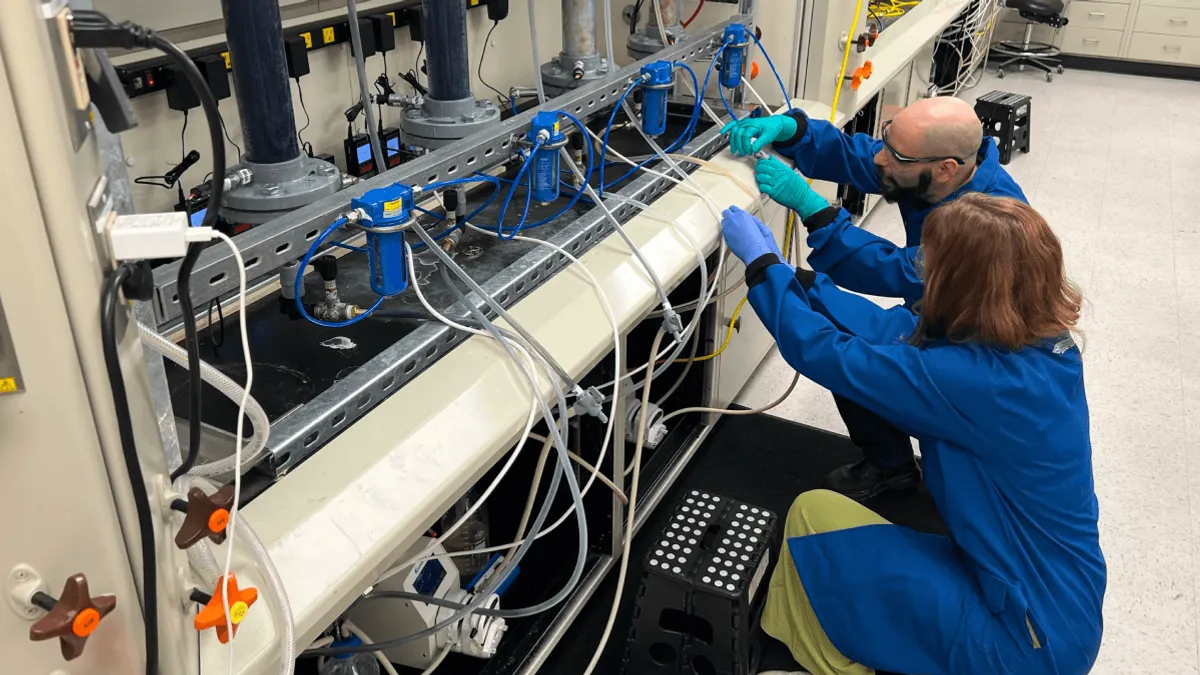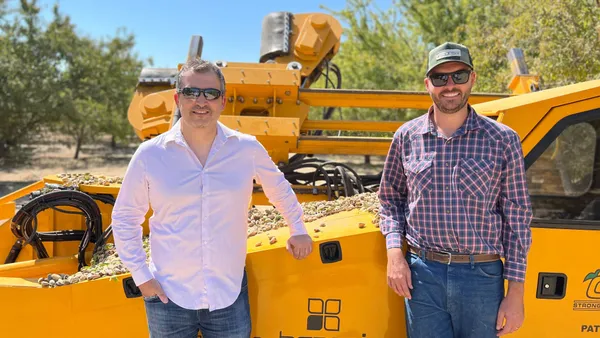In response to the rising crisis of soil degradation and excess carbon in the atmosphere, companies in the agricultural sector are attempting to offer a twofold solution: storing carbon in soil.
The practice, known as carbon farming, also called regenerative agriculture, is natural and as old as time. As the term and practice is becoming central to the food industry's sustainability goals, a host of new companies are cropping up to capitalize on this booming business.
Acting as liaisons between farmers and organizations looking to relieve carbon debt, companies like Indigo Ag, AgriProve, Nori, Truterra and Bayer are defining the carbon credit industry and facilitating relationships that allow regenerative practices to have an impact at scale. Meanwhile, startups like PivotBio, Pluton Bio and Locus Agriculture are working to create fertilizer alternatives that are more sustainable, yet allow farmers to achieve yields similar to – if not better than – synthetic chemicals.
However, to be successful, the emerging industry will have to convince farmers that regenerative agriculture is not just good for the environment, but also profitable.
“Sustainability begins with profitability," said Chad Pawlak, former CEO of Locus AG, a maker of alternative fertilizers that also oversees its own carbon credit program. “If the grower doesn't have an opportunity to reinvest in their operation…it's very difficult for them to expand into regenerative ag practices."
Growing a regenerative ecosystem
From biofertilizers to carbon credit programs, startups and major companies alike are racing to get in on a burgeoning industry centered around changing the way farmers do business.
Biofertilizer companies have raked in hundreds of millions of dollars in investor funding and are teaming up with some of the world's largest agriculture companies to bring more sustainable crop protection products to market. Some startups are becoming major players in and of themselves – microbial producer Pivot Bio is planning a major manufacturing expansion as revenue surpasses the $100 million mark.

Alternative fertilizers play a pivotal role in regenerative agriculture by reducing the reliance on chemicals and pesticides, and fostering a naturally enriched soil system by promoting microbial diversity and nutrient cycling.
“Soil does two things," said Barry Goldman, chief scientific officer at Pluton Bio, a company developing a microbial "cover crop" that can be sprayed over fields to capture carbon and nitrogen. “It can be a sink for carbon, and it enriches the land, so you can actually get more food from that soil.”
Despite the purported benefits of regenerative agriculture, it can be difficult to bring on board farmers used to traditional farming methods. The industry also needs to ensure that farmers stick with regenerative methods even after making the switch.
To do this, many biofertilizer companies have created carbon credit programs that incentivize farmers to transition to regenerative practices by paying them. Of the 10 carbon agricultural and forestry carbon offset programs created in the past five years, close to half were started by companies in the fertilizer or biofertilizer sector.
Carbon credit initiatives promise new revenue streams for farmers and program operators alike. The earnings that farmers can enjoy from these programs varies widely based on the practices adopted and the farm size, but the typical range is between $30 - $40 per carbon credit. Based on Indigo Ag’s carbon calculator, a farmer in Iowa City with 1,400 acres (about the average size of a large family farm) and plans to reduce their tillage in addition to planting or improving cover crops, could expect to earn $44,881 over the first five years. Earnings increase over time as companies want to see a commitment from farmers to regenerative practices.
“Farmers [will] see an increase in plant vitality, vigor, yield, and profitability. But it's certainly not something that happens overnight.”

Chad Pawlak
Former CEO of Locus AG
Some carbon credit programs however, are turning to model-based approaches to assess carbon levels in soil, rather than taking a measurement-based approach. This less expensive means of appraising carbon in land to create a carbon credit counterpart, has created ambiguity in the carbon market.
For small farmers up against major competitors, regenerative agriculture offers new ways to bring value to crops, especially as climate change and high input costs eat into producers' bottom line.
“They have fields that were just played out,” Goldman said. “So some growers said, how do I make this field valuable again? And this practice of regenerative farming started coming to the forefront.”
Addressing barriers to expansion
Although regenerative farming has shown to deliver the same outputs as traditional agriculture, there's a one-to-two year transition period in which yields temporarily decline. And while profits can grow 120% in the long-term, short-term financial investments can cost farmers up to $40 per acre.
On top of the transitional costs, there is a broader apprehension among farmers who have utilized the same practices for generations to completely switch tracks, especially in a field that often lacks strong expert guidance.
“If you're going to take somebody out of their comfort zone, there usually is a bit of a learning curve or a training,” said Pawlak of Locus Ag. “Once that takes hold, the profitability does increase, and the farmers see an increase in plant vitality, vigor, yield, and profitability. But it's certainly not something that happens overnight."

Not only is there a temporary lag in yields, but payouts also take time. Most carbon programs allocate credits only after independent verification of the undertaken activities. As a result, producers might have to wait up to two years before receiving compensation for their efforts. This delay requires farmers, ranchers, and forest proprietors to adopt practices at their own cost, potentially without adequate compensation to offset these expenses for an extended period.
Pawlak cites some of the leading incentives to transition as overall efficiencies, sustainability of the farm and a continually shrinking availability of water for agriculture, making the ability to maximize resources an increasing necessity.
But as demand for carbon credits and regenerative agriculture methods increase, lax regulations and a hodgepodge of metrics and definitions have made it difficult to scale efforts. With the private sector filling the void of creating definitions and standards for regenerative agriculture, the term has created consumer confusion and led to accusations of corporate "greenwashing."
Carbon credit distributors say that programs won't be able to scale without federal backing. Australia, for example, requires regenerative agriculture practices to be approved by regulators and the country has a more uniform approach to measurement and modeling. That's lent it more credibility.
“Soil does two things. It can be a sink for carbon, and it enriches the land, so you can actually get more food from that soil.”

Barry Goldman
Chief Scientific Officer, Pluton Bio
“If the models don't work or someone questions it, then suddenly the person who's bought all these credits gets accused of greenwashing,” said Duncan Farquhar, regional operations manager at AgriProve, Australia's leading soil carbon project developer.
Australia's model also takes aim at one of the other biggest concerns within the burgeoning regenerative industry — that farmers could revert back to their conventional ways when it appears no longer profitable to keep up with sustainable practices. The country requires regenerative agriculture projects to keep carbon in the soil for at least 25 years, and up to 100.
For AgriProve, landowners are required to enter a contract of at least 25 years with an included 20% fee that farmers pay for the risk of reversal, which is set aside from earnings as a sort of “emergency fund” in case they renege at any point throughout the deal. And there is a minimum land requirement of 40 hectares to mitigate disproportionately high transaction costs.
Back in the U.S., carbon credit developers say federal backing and subsidies would supercharge demand and spur wholesale changes in farming.
“One of the incentives that drove growers to corn and soy was subsidies,” Goldman said. “We don't have subsidies for pulling carbon out of the atmosphere, yet it's a problem that clearly affects all of us.”


